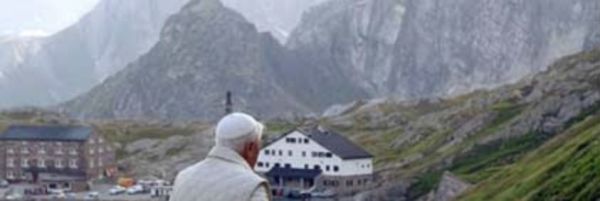The Gospel [...] proposes a twofold commandment of faith: to believe in God and to believe in Jesus. In fact, the Lord said to his disciples: “Believe in God, believe also in me” (Jn 14:1). They are not two separate acts but one single act of faith, full adherence to salvation wrought by God the Father through his Only-begotten Son.
The New Testament puts an end to the Father's invisibility. God has shown his face, as Jesus’ answer to the Apostle Philip confirms: “He who has seen me has seen the Father” (Jn 14:9). With his Incarnation, death and Resurrection, the Son of God has freed us from the slavery of sin to give us the freedom of the children of God and he has shown us the face of God, which is love: God can be seen, he is visible in Christ.
St Teresa of Avila wrote: “the last thing we should do is to withdraw from our greatest good and blessing, which is the most sacred humanity of Our Lord Jesus Christ” (cf. The Interior Castle, 6, ch. 7). Therefore, only by believing in Christ, by remaining united to him, may the disciples, among whom we too are, continue their permanent action in history: “Truly, truly, I say to you,” says the Lord, “he who believes in me will also do the works that I do” (Jn 14:12).
Faith in Jesus entails following him daily, in the simple actions that make up our day. “It is part of the mystery of God that he acts so gently, that he only gradually builds up his history within the great history of mankind; that he becomes man and so can be overlooked by his contemporaries and by the decisive forces within history; that he suffers and dies and that, having risen again, he chooses to come to mankind only through the faith of the disciples to whom he reveals himself; that he continues to knock gently at the doors of our hearts and slowly opens our eyes if we open our doors to him” (Jesus of Nazareth II, 2011, p. 276).
St Augustine says that “it was necessary for Jesus to say: ‘I am the way, the truth, and the life’ (Jn 14:6) because once the way was known, the end remained to be known” (cf. In Evangelium Iohannis Tractatus, 69, 2: CCL 36, 500), and the end is the Father. For Christians, for each one of us, hence, the way to the Father is to allow ourselves to be guided by Jesus, by his word of truth, and to receive the gift of his life. Let us make St Bonaventure’s invitation our own: “Open, therefore, your eyes, lend your spiritual ear, open your lips and dispose your heart, so that you will be able to see, hear, praise, love, venerate, glorify, honour your God in all creatures” (Itinerarium mentis in Deum, i, 15).
[Pope Benedict, Angelus 22 May 2011]












